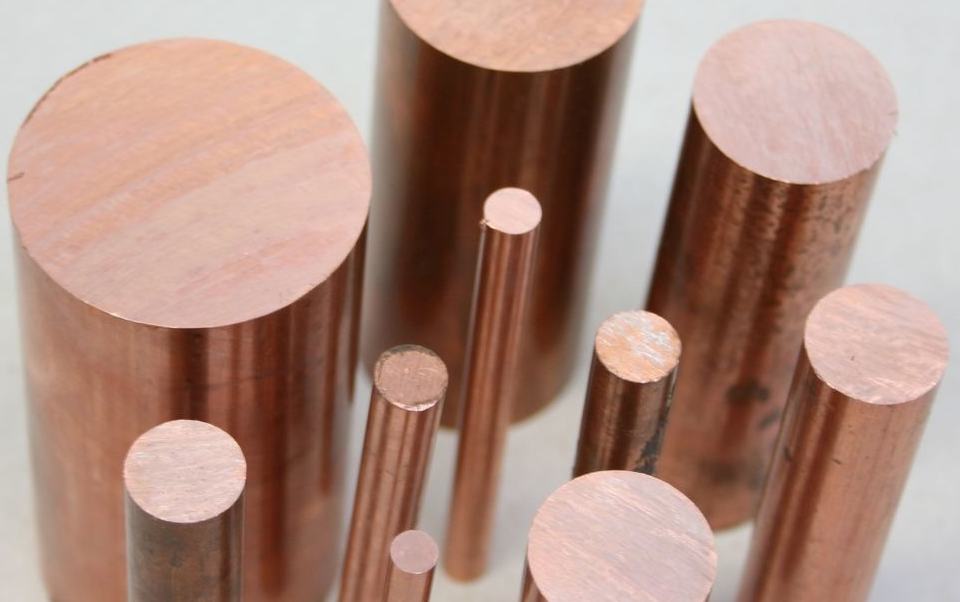Tungsten Copper Alloy vs Molybdenum Copper Alloy

Tungsten Copper Alloy vs Molybdenum Copper Alloy
As alloy materials, both tungsten copper alloy and molybdenum copper alloy are used in a wide range of applications, such as aerospace, aviation, navigation, military, defense, electronics, electric power, metallurgy, machinery, sports equipment, and other industries. Although they can replace each other in some cases, there are many differences between them. So in this article, let's take a look at the difference between tungsten copper alloy and molybdenum copper alloy.

Tungsten Copper Alloy
1. Different Definitions
Tungsten copper alloy is an alloy composed of tungsten and copper, the copper content is 10%-50%, and the tungsten content is 30%-95%.
Molybdenum copper alloy is an alloy composed of molybdenum and copper, which can replace tungsten-copper alloy in many cases. According to the different chemical compositions, the grades of molybdenum copper alloy can be divided into MoCu10, MoCu15, MoCu20, MoCu25, MoCu40, and their total impurity content is less than 0.1%.
2. Different in Nature
Tungsten-copper alloy has the characteristics of tungsten and copper and has good electrical and thermal conductivity, corrosion resistance, wear-resistance, and processing performance. When the temperature is above 3000 ℃, the copper in the alloy will be liquefied and evaporated. Compared with tungsten-copper alloys, molybdenum-copper alloys have lower density and lighter weight and are more suitable for use in products that require stricter weight indicators.
Molybdenum copper alloy has the characteristics of both molybdenum and copper and has the characteristics of non-magnetic, strong high-temperature resistance, high thermal conductivity, low adjustable thermal expansion coefficient, excellent vacuum performance, and mechanical processing. In terms of heat resistance and wettability, molybdenum copper alloys are worse than tungsten copper alloys.
3. Different Production Process
The preparation methods of tungsten copper alloy include powder metallurgy method, injection molding method, copper oxide powder method, tungsten skeleton infiltration method, and so on. Among them, the process flow of powder metallurgy to prepare tungsten copper alloy includes: pulverizing-mixing of ingredients-pressing forming-sintering infiltration-cold working.
Molybdenum copper alloy preparation methods include liquid phase sintering method and molybdenum skeleton infiltration method. The liquid phase sintering method refers to the liquid phase sintering of the mixed powder of molybdenum and copper at a temperature of 1300-1500°C after compression molding.
4. Different Uses
Tungsten copper alloy is mainly used in high-temperature resistant materials, electrical machining electrodes, microelectronic materials, electrical alloys for high voltage switches, etc.
Molybdenum copper alloy is suitable for manufacturing military and civilian high-power microelectronic devices.
Conclusion
Thank you for reading our article and we hope it can help you to have a better understanding of the differences between tungsten copper alloy and molybdenum copper alloy. If you want to know more about refractory metals and alloys, we would like to advise you to visit Advanced Refractory Metals (ARM) for more information.
Headquartered in Lake Forest, California, USA, Advanced Refractory Metals (ARM) is a leading manufacturer & supplier of refractory metals & alloys across the world. It provides customers with high-quality refractory metals & alloys such as molybdenum, tantalum, rhenium, tungsten, titanium, and zirconium at a very competitive price.
{{item.content}}
LEVE A REPLY
{{item.children[0].content}}
{{item.content}}






